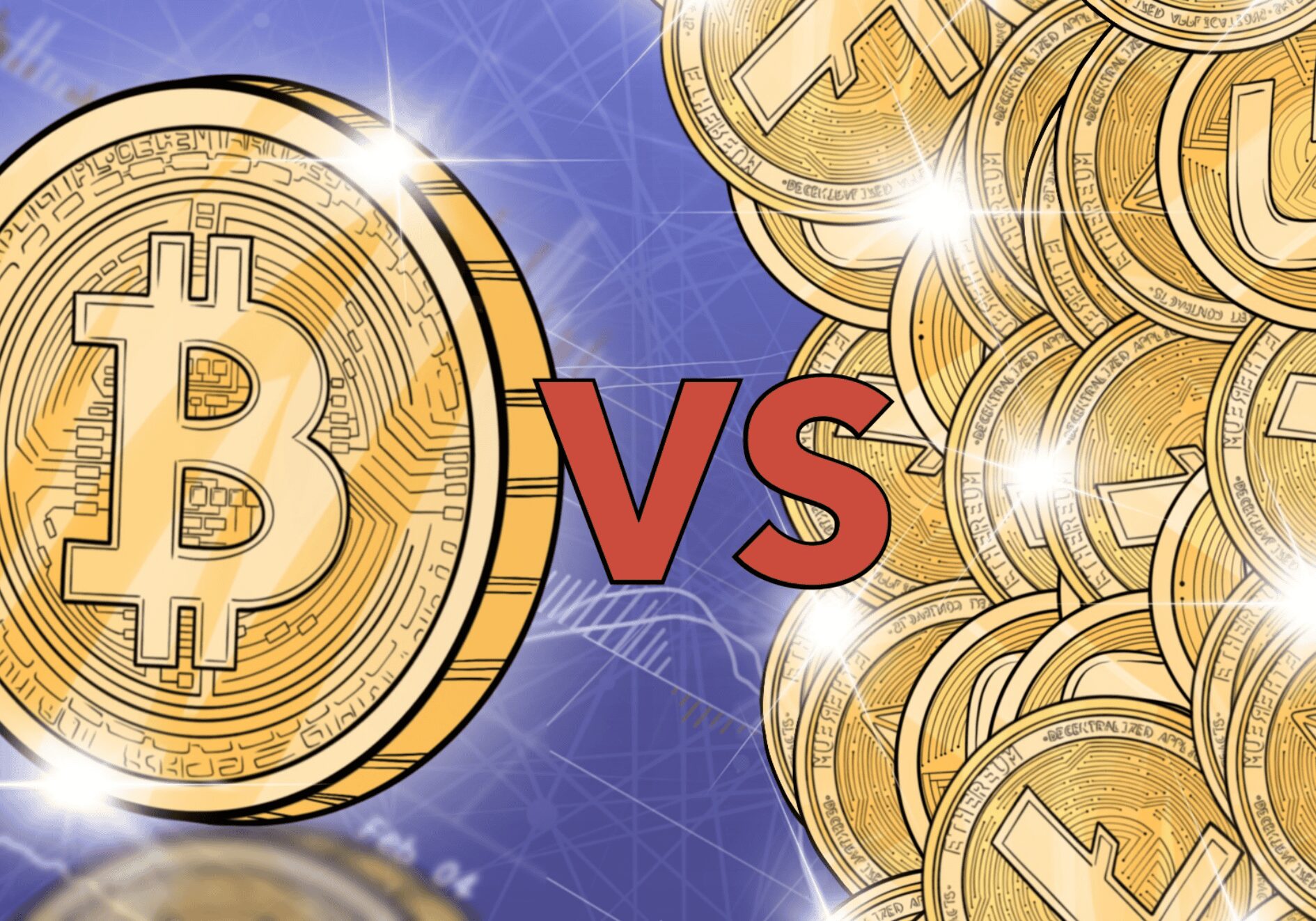Introduction
The cryptocurrency market is constantly evolving, influenced by macroeconomic factors, regulatory changes, and technological advancements. As we move into Q2 2025, Bitcoin and altcoins continue to experience significant volatility, with institutional adoption, regulatory clarity, and technological upgrades shaping the landscape. In this article, we will analyze the current market situation of Bitcoin and altcoins, their potential trajectories, and the types of investors best suited for each category of cryptocurrency investment.
Bitcoin (BTC): The Market Leader

Current State of Bitcoin
Bitcoin remains the dominant cryptocurrency, often referred to as “digital gold” due to its store-of-value properties. The past quarter has seen Bitcoin reach new all-time highs, driven by increasing institutional adoption, favorable regulatory developments, and the continued demand for decentralized assets.
Key Factors Influencing Bitcoin
- Bitcoin ETF Approvals: The approval and growing adoption of Bitcoin ETFs in multiple jurisdictions, including the U.S. and Europe, have led to increased institutional investments.
- Bitcoin Halving Event (April 2024): The most recent halving event reduced the mining reward from 6.25 BTC to 3.125 BTC per block, increasing Bitcoin’s scarcity and driving long-term bullish sentiment.
- Institutional Adoption: Major financial institutions, including hedge funds and publicly traded companies, continue to allocate portions of their portfolios to Bitcoin.
- Macroeconomic Trends: The ongoing concerns regarding inflation and fiat currency devaluation have led to Bitcoin being considered a hedge against economic uncertainty.
- Regulatory Clarity: Countries such as the U.S., Japan, and the UAE have implemented clearer regulations, reducing uncertainty and increasing investor confidence.
Who Should Invest in Bitcoin?
- Long-term investors (HODLers): Bitcoin is a strong long-term investment due to its historical performance, increasing scarcity, and growing adoption.
- Institutional and high-net-worth investors: BTC is viewed as a hedge against inflation and a reliable store of value similar to gold.
- Risk-averse investors in crypto: Compared to altcoins, Bitcoin is less volatile and has the strongest network security and adoption.
- Investors seeking liquidity: Bitcoin remains the most liquid cryptocurrency, making it an ideal investment for those who may need to exit positions quickly.
Altcoins: Expanding Beyond Bitcoin

While Bitcoin remains the market leader, altcoins offer diversification opportunities and potential higher returns due to their unique use cases.
Ethereum (ETH): The Smart Contract Giant
Ethereum continues to dominate the decentralized finance (DeFi) and non-fungible token (NFT) space. The transition to Ethereum 2.0 and the ongoing scaling solutions, such as Layer-2 protocols (Optimism, Arbitrum), have improved the network’s efficiency.
Who Should Invest in Ethereum?
- Developers and tech investors: Those interested in smart contracts, DeFi, and NFT-related innovations.
- Long-term crypto investors: Ethereum has a solid track record and is the foundation of decentralized applications.
- Yield seekers: ETH staking provides passive income opportunities through Ethereum’s proof-of-stake consensus mechanism.
Solana (SOL): The High-Speed Contender
Solana has emerged as a strong competitor to Ethereum, offering fast and low-cost transactions. With increased DeFi and NFT activity, Solana’s adoption continues to grow.
Who Should Invest in Solana?
- Traders looking for high-risk, high-reward opportunities: SOL has shown strong price surges during bullish cycles.
- Developers and users of fast blockchain applications: Solana’s high throughput makes it attractive for gaming and DeFi applications.
- Investors seeking alternatives to Ethereum: Those looking for blockchain platforms with lower fees and faster transactions.
Ripple (XRP): The Institutional Bridge
Ripple continues to make strides in global payments, securing partnerships with financial institutions and expanding its ecosystem.
Who Should Invest in XRP?
- Investors looking for regulatory clarity: Ripple’s partial victory against the SEC has increased investor confidence.
- Those interested in cross-border payments: XRP is widely used for international remittances.
- Long-term institutional-focused investors: Ripple’s partnerships with banks could drive demand over time.
Cardano (ADA): The Research-Based Blockchain
Cardano is focused on scalability, security, and sustainability, making it a long-term project with strong development activity.
Who Should Invest in Cardano?
- Long-term believers in blockchain research and sustainability: Cardano emphasizes peer-reviewed development and rigorous upgrades.
- Stakers looking for passive income: ADA’s staking model allows investors to earn rewards with minimal risk.
- Investors seeking an Ethereum alternative: Cardano aims to improve upon Ethereum’s scalability and governance issues.
Polkadot (DOT): The Interoperability Leader
Polkadot enables multiple blockchains to communicate and share data, making it a crucial player in the multi-chain future.
Who Should Invest in Polkadot?
- Investors in blockchain interoperability: DOT is ideal for those who believe in a multi-chain future.
- Long-term investors in innovative blockchain ecosystems: Polkadot’s parachain auctions have driven significant demand.
- Developers interested in building custom blockchains: Polkadot’s Substrate framework allows for customized blockchain solutions.
Meme Coins and Speculative Investments (DOGE, SHIB, PEPE)
Meme coins remain highly speculative but continue to attract significant retail interest, often driven by social media and celebrity endorsements.
Who Should Invest in Meme Coins?
- High-risk traders: Those willing to speculate and accept extreme volatility.
- Short-term investors: Meme coins often rely on hype and social trends rather than fundamentals.
- Retail investors looking for fun and community-driven projects: Many meme coins have strong online communities that drive engagement.
Investment Strategies for Different Investor Type

1. Conservative Investors
- Primary Holdings: Bitcoin (BTC), Ethereum (ETH)
- Risk Level: Low to moderate
- Strategy: Focus on blue-chip cryptocurrencies with long-term growth potential and strong institutional adoption.
2. Growth-Oriented Investors
- Primary Holdings: Ethereum (ETH), Solana (SOL), Cardano (ADA), Polkadot (DOT)
- Risk Level: Moderate
- Strategy: Invest in high-potential altcoins with strong development activity and growing adoption.
3. High-Risk, High-Reward Traders
- Primary Holdings: Solana (SOL), Meme Coins (DOGE, SHIB, PEPE), DeFi tokens
- Risk Level: High
- Strategy: Actively trade volatile altcoins and meme coins for short-term gains.
4. Passive Income Seekers
- Primary Holdings: Ethereum (ETH), Cardano (ADA), Polkadot (DOT), Staking Coins
- Risk Level: Moderate
- Strategy: Focus on staking and yield-generating assets to earn passive income.
5. Institutional and Corporate Investors
- Primary Holdings: Bitcoin (BTC), Ethereum (ETH), Ripple (XRP)
- Risk Level: Low to moderate
- Strategy: Invest in regulatory-compliant cryptocurrencies that provide long-term stability and store-of-value properties.
Conclusion
The cryptocurrency market in 2025 continues to evolve, with Bitcoin maintaining its dominance while altcoins provide diverse investment opportunities. Bitcoin remains a strong choice for long-term investors and institutional adoption, while altcoins offer potential for high returns and technological innovation.
Choosing the right investment depends on individual risk tolerance, investment goals, and market conditions. Whether you are a conservative investor looking for stability or a high-risk trader seeking short-term gains, understanding the current state of the market will help you make informed investment decisions.
Disclaimer: This article is for informational purposes only and does not constitute financial advice. Always conduct thorough research and consult with a financial professional before making investment decisions.




